Diverse fish species inhabit the Illinois River. This includes white bass, channel catfish, fathead catfish, sauger, smallmouth bass, walleye, and blue catfish. The Illinois River spans 273 miles across Illinois, finally merging with the Mississippi River near Alton.
Apart from the dam on the Mississippi at Alton, the Illinois River is home to five dams. The dams and locks regulate the river’s depth for navigation purposes. The Illinois River is a beloved destination for kayaking, boating, and fishing enthusiasts. Its serene waters offer ample opportunities for swimmers. There are numerous swimming holes dotting the river’s course. Moreover, residents and travelers are drawn to the river’s bountiful fish population that provides a safe and delicious catch for all.
The Illinois River attracts numerous anglers, hosting 28 tournaments in 2022. If you’re curious about the presence of large fish, delve into our exploration of the top 10 largest fish found in the Illinois River.
10 Largest Fish in Illinois River
From colossal catfish to mighty bass, prepare to be captivated by the remarkable size and power of the 10 largest fish that call the Illinois River their home.
1. Lake Sturgeon (Acipenser fulvescens)
The Lake Sturgeon, a magnificent and ancient fish species native to Illinois, captivates with its awe-inspiring features. The fish, also called the giant of the depth, has an elongated body and bony plates. It boasts an impressive size, reaching up to 7 feet long and weighing over 200 pounds. Lake Sturgeon are among the most enduring freshwater fish species on Earth. They can live for more than a century.
Lake Sturgeon’s feeding habits are equally intriguing. They feed on insect larvae, mollusks, and small fish, utilizing their tubular mouths to suction food from the riverbed. The fish don’t feed on decomposing or dead organisms but prefer fresh food. Despite their imposing stature, these gentle giants pose no threat to humans and coexist harmoniously with other river inhabitants.
Regrettably, the Lake Sturgeon faces grave challenges due to overfishing and habitat degradation. Consequently, their populations have experienced a significant decline, necessitating urgent conservation initiatives to safeguard and restore their numbers. Illinois State has prohibited fishing of this fish within its borders.
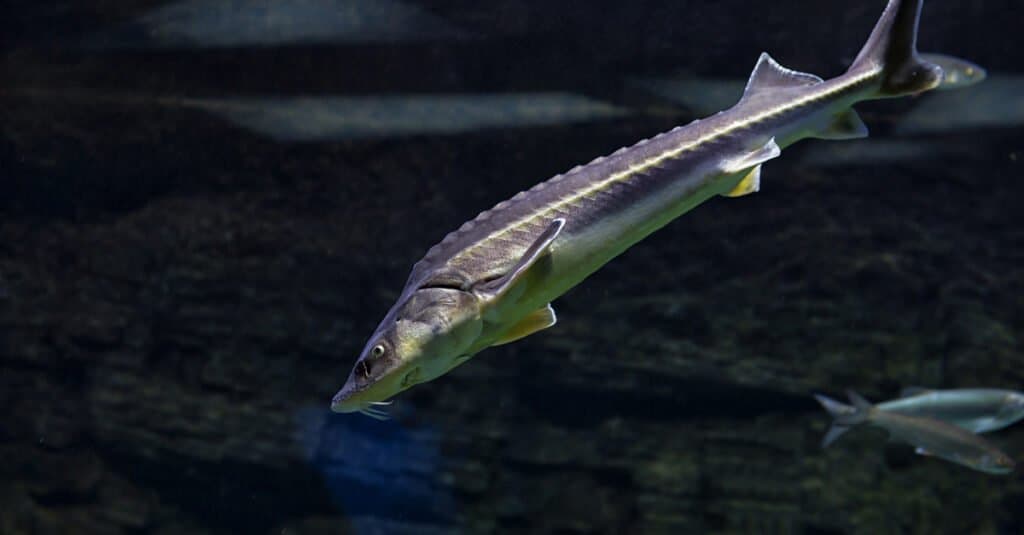
©Galina Savina/Shutterstock.com
2. Alligator Gar (Atractosteus spatula)
Another large fish in the Illinois River is the Alligator Gar. After it was reintroduced, the fish returned to the Illinois River. They were declared officially extinct in the 1990s. This largest Illinois native fish reigns as a true predator in the waters. It boasts a long, tooth-filled snout reminiscent of its namesake. The fish is the largest freshwater fish in North America. It can reach up to 10 feet long and weigh over 300 pounds.
The Alligator Gar fearlessly preys upon smaller fish, waterfowl, and even small mammals. Its powerful jaws and sharp teeth solidify its position as an apex predator within the ecosystem. These formidable creatures exhibit a dark olive-green coloration, effectively camouflaging amidst their surroundings. The fish pose little threat to humans unless provoked, although their appearance might strike fear into the hearts of some. The last documented Alligator Gar caught in Illinois was in 1966.
The Illinois Department of Natural Resources started the Alligator Gar Reintroduction Program. They added 1600 alligator gar into four waterways. The dedicated initiative aimed to mitigate habitat loss and establish sustainable fishing practices. It also sought to raise awareness regarding the importance of the Alligator Gar’s conservation. By safeguarding their existence, we can uphold the delicate balance of the river’s ecosystem. This would ensure the continuity of this remarkable and ancient species for generations to come.
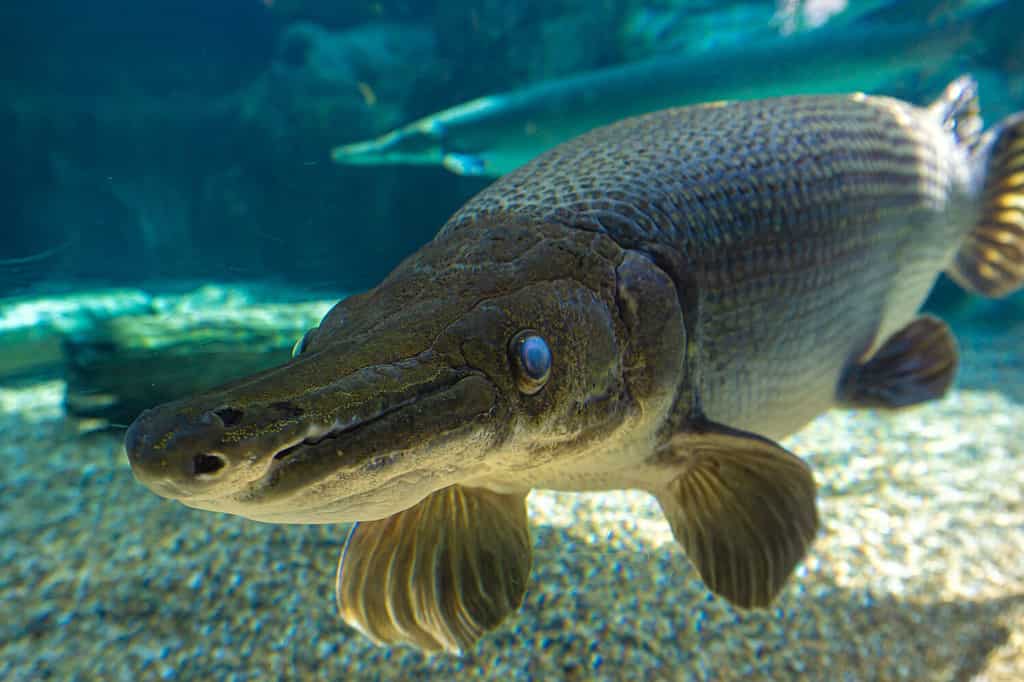
©TKBackyard/Shutterstock.com
3. Flathead Catfish (Pylodictis olivaris)
Head to the Illinois River if it’s a Large flathead catfish you’re after. But catching them, well, that will depend on your skills. The Flathead Catfish is an impressive and formidable predator that thrives in the waters of the Illinois River. With its distinctive, broad, and flattened head, this species is well adapted for navigating and hunting within the diverse habitats of the river. Only expect to find a few at once, as they are usually solitary species.
Flathead Catfish has become a coveted catch for anglers seeking an exhilarating challenge. They can be as long as 5 feet and weigh over 100 pounds. Flathead Catfish are opportunistic feeders. They prey on many species, including fish, crustaceans, and even small birds. They are renowned for their voracious appetite. Their insatiable hunger and adaptability contribute to their ecological significance within the Illinois River ecosystem. Their impressive strength and fighting abilities make them a thrilling target for anglers. Catching this fish requires a special level of skill and determination to reel the catch in.
The Flathead Catfish populations have managed to maintain relative stability in the Illinois River. This resilience is a testament to the species’ adaptability. Effective management practices ensure the preservation of ecological balance. It also provides for recreational opportunities in the region. La Grange Pool has been termed by anglers as the best place to catch flathead Catfish in the Illinois River. The pool stretches 77 miles from the La Grange Lock and Dam to Peoria Lock and Dam.
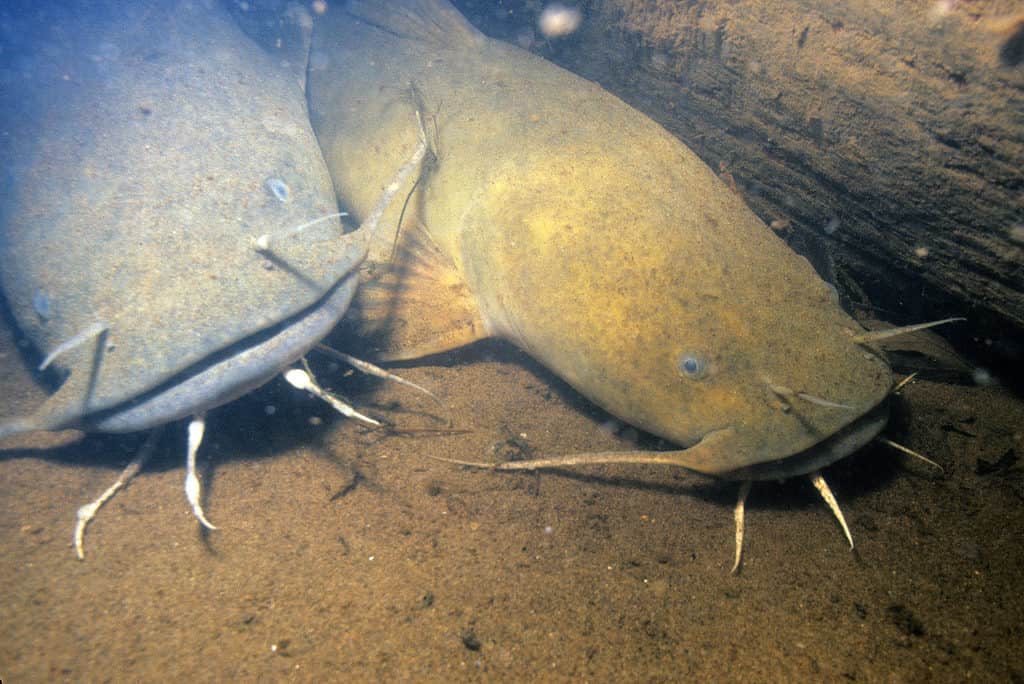
©iStock.com/stammphoto
4. Blue Catfish (Ictalurus furcatus)
Blue Catfish is the largest among the North American Catfish. It’s an impressive species and a prominent inhabitant of the Illinois River. Renowned for their enormous size, reaching over 5 feet long and weighing over 100 pounds, these majestic fish display a beautiful bluish-gray coloration. Blue Catfish are easily recognizable with their distinct flat, broad head and deeply forked tail fins.
They are opportunistic predators. The Blue Catfish possess a diverse diet that includes fish, invertebrates, and aquatic insects. Their powerful swimming abilities and tenacity make them a thrilling challenge for anglers. Consequently, these magnificent creatures are often the primary target in fishing tournaments due to their large size and popularity.
The Illinois River has less population of Blue Catfish. Nevertheless, you can catch some if you know where to look. Your lucky bet would be the channel edge close to La Salle up to the dam above Starved Rock State Park and the stump field above the dam at Starved Rock.
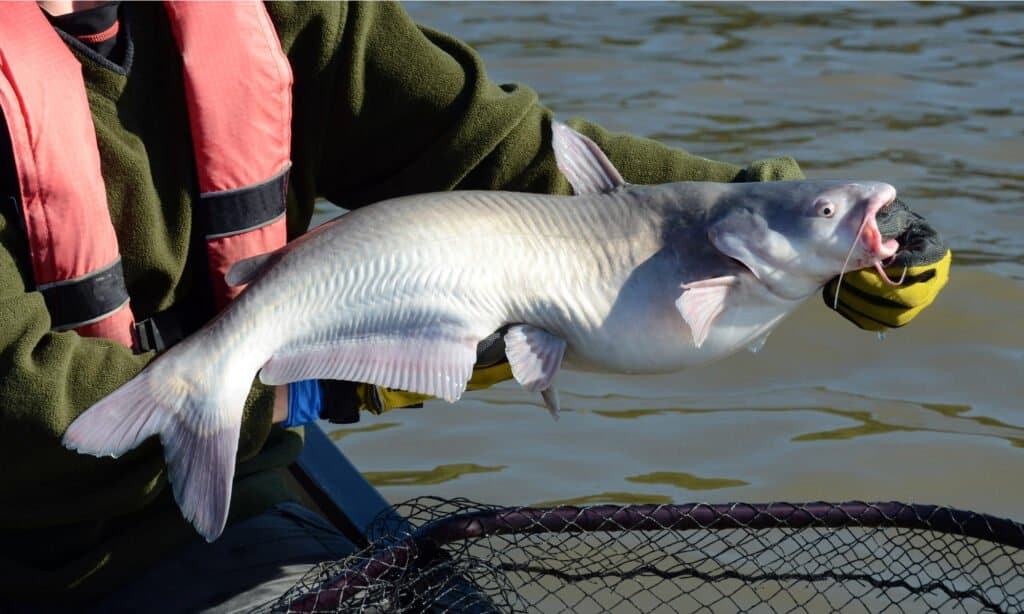
©M Huston/Shutterstock.com
5. Bighead Carp ( Hypophthalmichthys nobilis)
The Bighead Carp has become a prominent invasive species in the Illinois River, originating from Asia. This colossal fish species can grow to lengths exceeding 4 feet and weigh up to 110 pounds. Its distinct features include a shimmering silver-colored body, a vast toothless mouth with a protruding lower jaw, and a significantly enlarged head.
Mainly sustaining themselves on plankton, carp disrupt the delicate equilibrium of the river ecosystem. With their remarkable reproductive capabilities and insatiable appetite, Bighead Carp pose a significant threat to native fish species by overpowering them in the competition for vital resources like food and habitat. The consequences of their invasion have already caused notable ecological damage to the Illinois River, prompting urgent action.
Bighead Carp has established well in the Illinois River. The largest population appears in the middle and lower sections and the Waterway section.
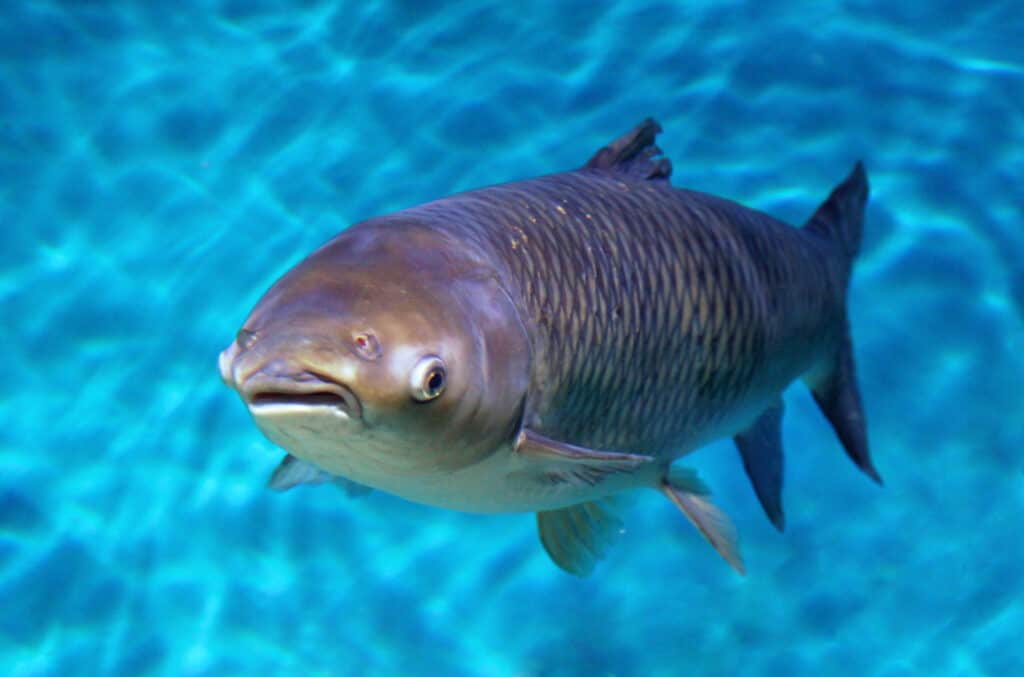
©Katoosha/Shutterstock.com
6. Grass Carp (Ctenopharyngodon)
Like the Bighead Carp, the Grass Carp is not native to Illinois but was deliberately introduced to regulate aquatic vegetation. These fascinating fish possess remarkable characteristics, capable of growing up to 4 feet in length and weighing over 80 pounds. Moreover, there have been reports of some reaching 400 pounds. With elongated bodies exhibiting a sleek silver coloration and a subtly upturned mouth, Grass Carp possess distinct features.
The Grass Carp diet predominantly consists of aquatic plants, particularly grasses (as their name suggests). Their impressive ability to consume substantial amounts of vegetation is well-recognized. While Grass Carp play a crucial role in managing vegetation growth, their presence can inadvertently disrupt the river’s delicate ecosystem by adversely affecting native plant and animal species. Like their other invasive cousins, the fish can be found across the Illinois River.
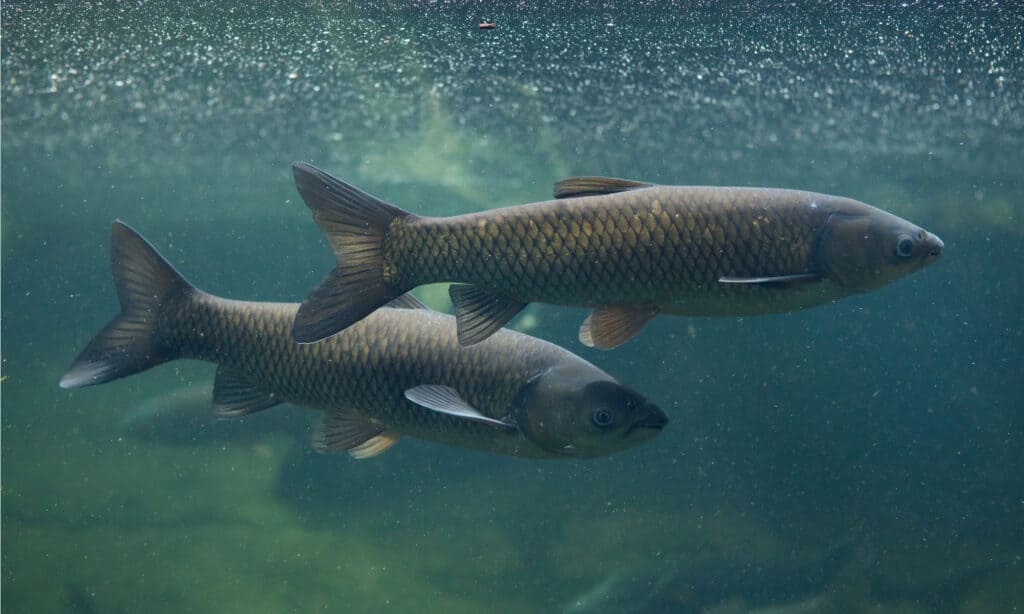
©Vladimir Wrangel/Shutterstock.com
7. Paddlefish (Polyodon spathula)
The Paddlefish also joins our list of large fish inhabiting the Illinois River. This fish has a genuinely distinctive appearance with their titular elongated rostra, which helps them detect prey. The long snout, reminiscent of a paddle, has earned it the nickname “spoonbill.” Paddlefish has a gray to blue-gray color on the back and sides and a white belly. It has no scales except for a section on the upper lobe of the forked tail.
Growing to impressive lengths of up to 7 feet and weighing over 100 pounds, these remarkable creatures rank among the largest freshwater fish in the region. They exhibit a unique feeding behavior as filter feeders, propelling themselves with mouths agape to ensnare tiny planktonic organisms. For this reason, they don’t take the bait, and snagging is their most popular catching method. Snagging season is from March 15 to April 30. They prefer slow-moving water over four feet deep.
It’s intriguing to note that Paddlefish eggs are sought after for consumption, with some farmers specifically raising Paddlefish for this purpose. However, the Paddlefish population has faced a decline over the years. In 1989, lobby groups advocated for the American Paddle to be recognized as a threatened fish species under the Endangered Species Act, but the request was denied due to limited biological data. To safeguard the fish, Illinois has implemented regulations restricting Paddlefish harvesting, particularly for commercial use.
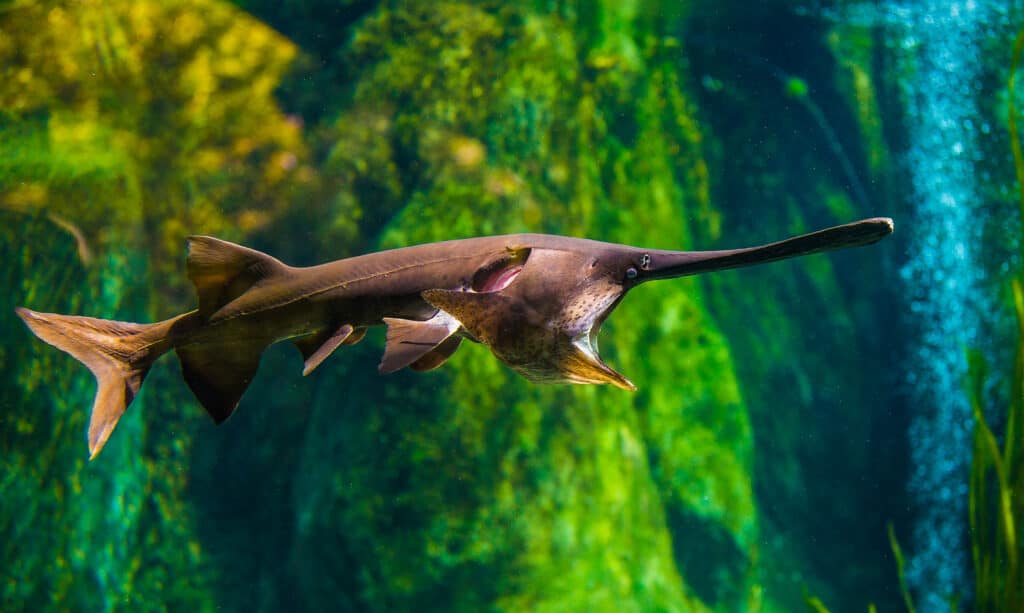
©Saran Jantraurai/Shutterstock.com
8. Smallmouth Buffalo (Ictiobus Bubalus)
The Smallmouth Buffalo is another type of fish found in the Illinois River. It belongs to the sucker family and stands out with its robust body and downward-pointing mouth. Despite its name, it is not closely related to the buffalo fish. Smallmouth Buffalo typically reach lengths of 2-3 feet (0.6-0.9 meters) and can weigh up to 30-40 pounds (14-18 kilograms). They exhibit a dark olive or grayish-brown coloration and possess a streamlined body shape.
Smallmouth Buffalo is a stocky fish like its cousins, the Bigmouth and black buffalo. However, the smallmouth buffalo’s mouth is ventral. In contrast, the Bigmouth buffalo’s mouth is terminal and opens forward, and the smallmouth buffalo’s eyes are also bigger than those of the black buffalo.
Primarily bottom feeders, Smallmouth Buffalo use their specialized mouths to suction algae, insects, and other small organisms from the riverbed. They prefer slow-moving or still waters, such as pools and backwaters in the Illinois River. While they are not usually targeted as sport fish, some anglers occasionally catch them using bottom fishing techniques.
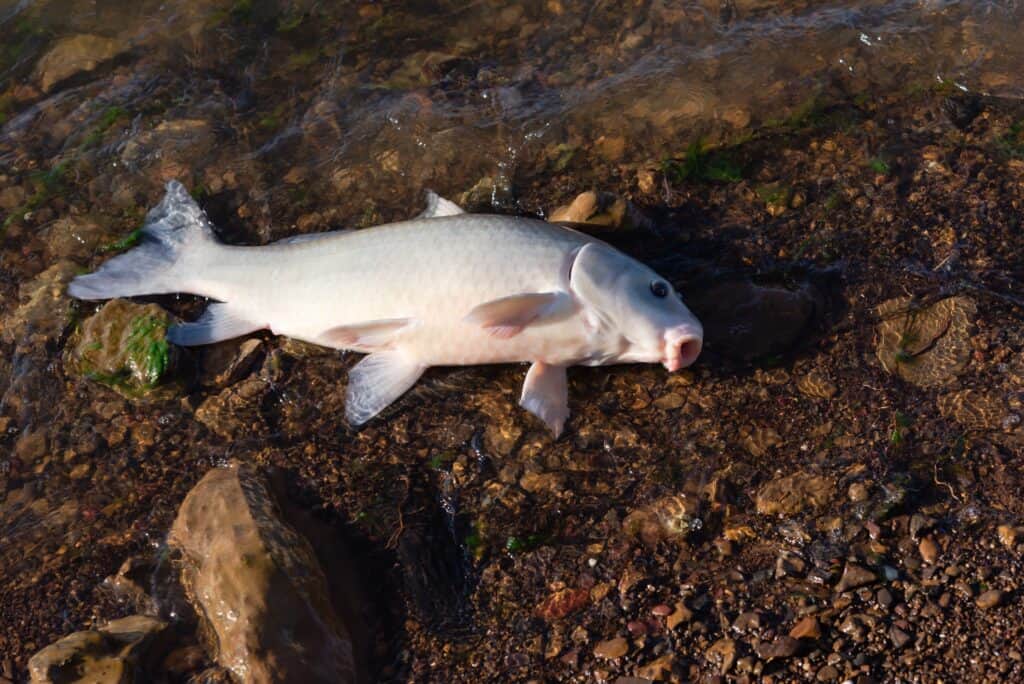
©Trong Nguyen/Shutterstock.com
9. Longnose Gar (Lepisosteus osseus)
The Longnose Gar is a unique and ancient-looking fish in the Illinois River. It has a long, slender body with a distinct elongated snout or “gar.” Longnose Gars can grow between 3 and 6 feet (0.9-1.8 meters) in length and weigh around 10-30 pounds (4.5-13.6 kilograms).
They have an olive or brownish coloration and are covered in hard, diamond-shaped scales.
Longnose Gars are predatory fish and are known for their sharp teeth. They primarily feed on smaller fish and are skilled ambush predators. Their long, slender bodies and ability to breathe air allow them to inhabit stagnant or low-oxygen waters. Longnose Gars have a prehistoric appearance and are often sought after by anglers for their unique characteristics.
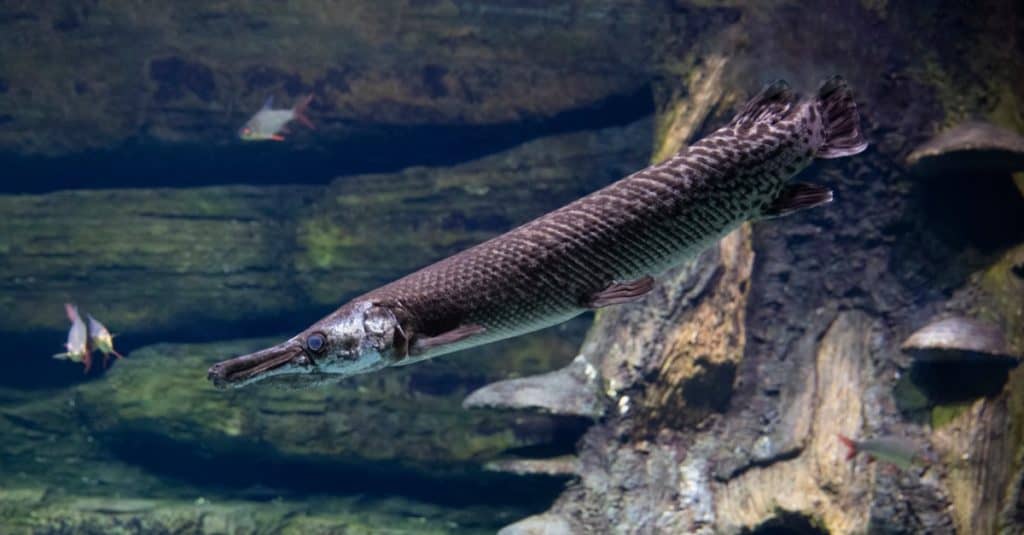
©ivSky/Shutterstock.com
10. Sauger (Sander canadensis)
Last on our list is the Sauger, a beloved sport fish in the Illinois River. Although smaller than most fish in this list, the Sauger has also got a bit of length. Sauger shares close similarities with the Walleye. Known for its remarkable characteristics, it typically grows to lengths of 1-2 feet (0.3-0.6 meters) and can weigh up to 1-2 pounds (0.5-1 kilogram). The Sauger is a sight to behold with its sleek body and beautiful mottled dark brown or olive coloration, often accompanied by black spots.
One of the Sauger’s notable attributes is its exceptional vision, which aids in its prowess as a predator. Feeding primarily on small fish and aquatic insects, Saugers demonstrate their hunting skills with precision. Anglers prize Saugers for their fierce strikes and delectable flesh, making them a sought-after catch. Techniques like jigging or trolling with minnow-like lures are commonly employed to target these prized fish.
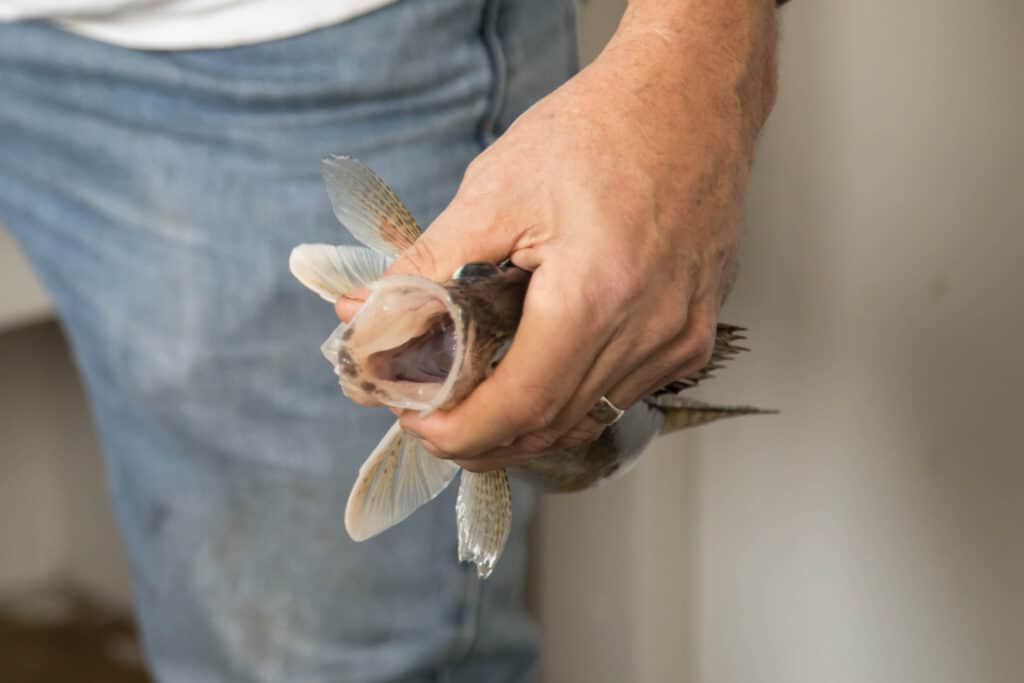
©iStock.com/KaraGrubis
Discover the Allure of Illinois River Largest Fish
The Illinois River is a thriving ecosystem with diverse fish species, including impressive giants like Lake Sturgeon. Its rich aquatic life and natural wonders captivate all who witness them.
The Illinois River is home to unique and awe-inspiring fish species like the Alligator Gar. Unfortunately, some, including Lake Sturgeon and Alligator Gar, face challenges from overfishing and habitat degradation. However, conservation efforts and strict regulations aim to protect and restore their populations. Visit the Illinois River to witness these impressive fish, but be sure to follow guidelines to help preserve the threatened species.
Up Next:
"fish" - Google News
July 04, 2023 at 11:12PM
https://ift.tt/HXBxijq
River Monsters: The 10 Largest Fish in the Illinois River - AZ Animals
"fish" - Google News
https://ift.tt/m5ecQA3
https://ift.tt/tQkmvwg
Bagikan Berita Ini














0 Response to "River Monsters: The 10 Largest Fish in the Illinois River - AZ Animals"
Post a Comment